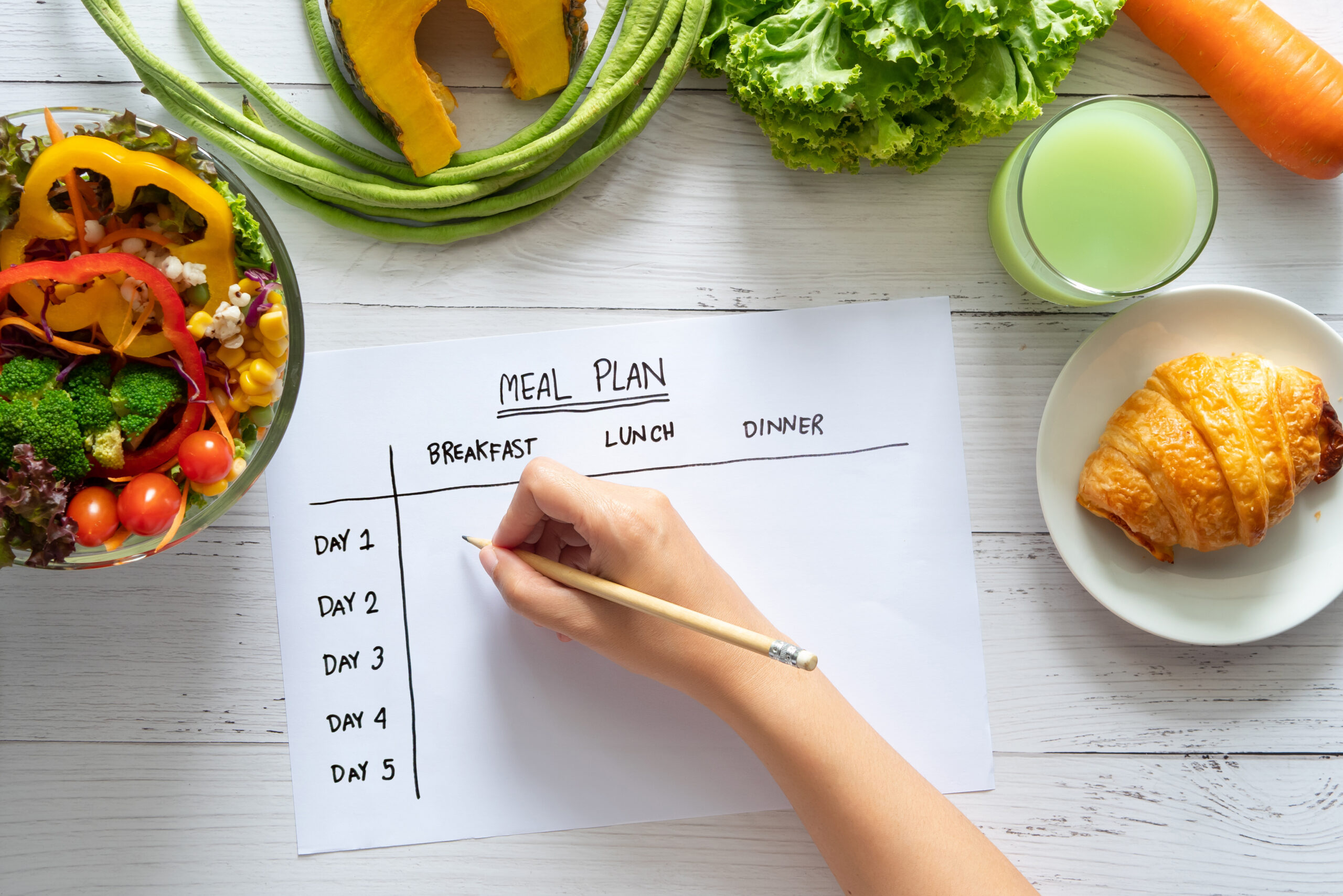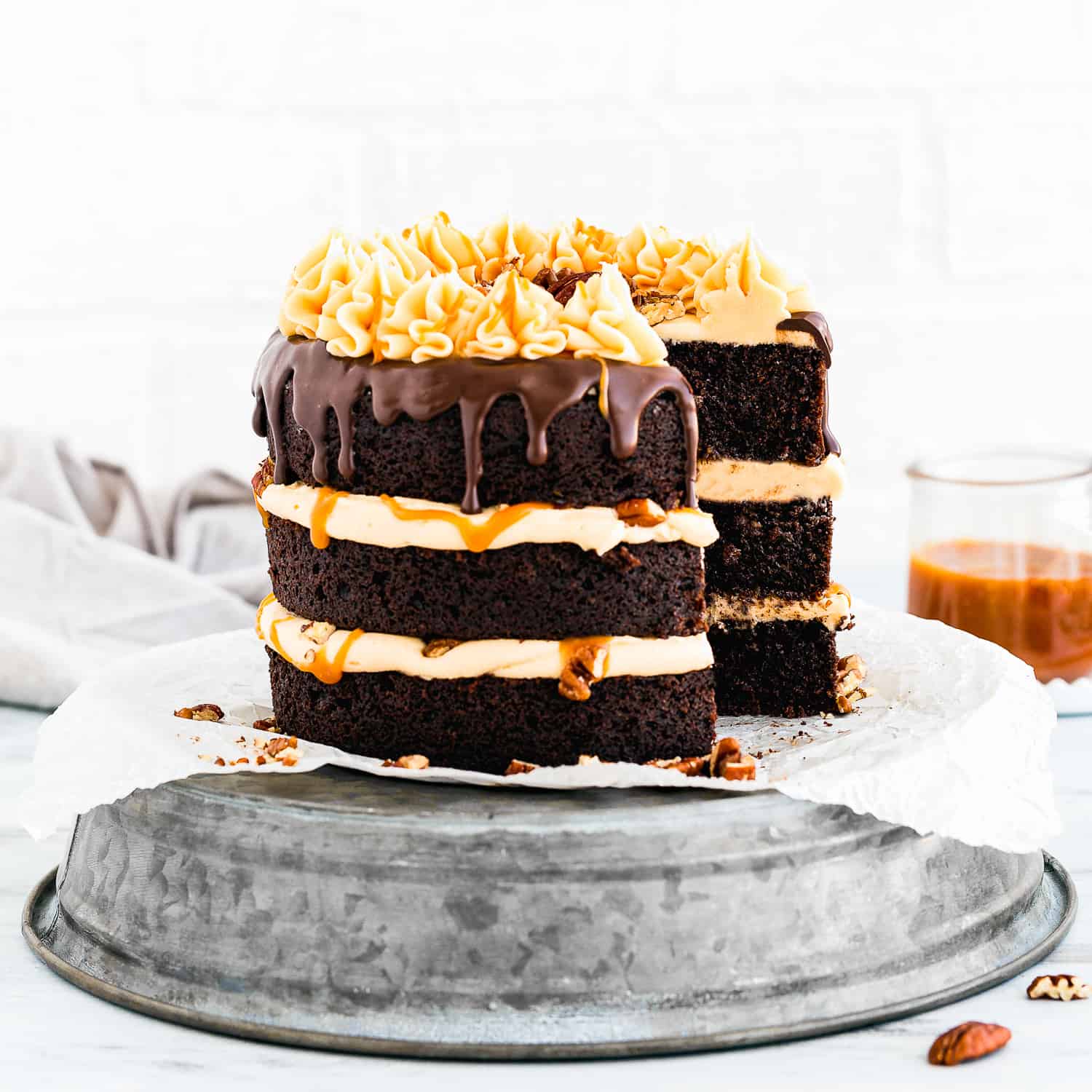How To Meal Plan With Food Allergies
This post may contain affiliate links. Read our disclosure policy.
The content provided on FoodAllergiesLiving.com is for educational purposes only. The information supplied on this website is not intended to diagnose, treat, cure, or prevent any disease, nor is it intended to replace the advice of a physician.
Let’s face it, meal planning is a tough task. But, having to create a meal plan with food allergies is even harder! Life is chaotic and busy, and having a plan for meals can really be a time saver, which is why I’m sharing my top 10 tips for How To Meal Plan With Food Allergies.

My 10 Tips to Meal Plan With Food Allergies
I love implementing a meal plan into my weekly schedule. Not only does it save me a ton of time during the week, but it also saves me from the mental stress of having to come up with something to cook every single day. Not to mention, it’s also a money saver because ingredients are being bought with a purpose and used before they go bad, and these days I like to save wherever I can!
While there are many, many benefits to meal planning, it is NOT the easiest task. On top of that, trying to figure it out while juggling food allergies, can easily become completely overwhelming.
Well, not fear, I am here to help! Below you’ll find my top 10 tips for meal planning with food allergies. From finding recipes to involving your kids, you’ll be an allergy-friendly meal-prepping pro in no time!
1. Start With Motivation
My first suggestion for preparing to meal planning is to begin with motivation. It’s a daunting task you’re about to tackle but think about the WHY behind what you’re going to do.
Why would meal planning be helpful to you?
- Would you be less stressed?
- Would you be able to get your family to eat more nutritious food?
- What would your day look like if meals weren’t rushed?
Think about if these reasons are important to you!
I like meal planning because:
- It helps me to be more present throughout the day because I’m not stressing over what I have to cook later.
- My family is introduced to a wider variety of foods.
- The meals are more balanced. This is especially important when you’re on a restricted diet due to food allergies.
- Having a meal plan isn’t only a time saver, but it can also save money. Allergen-friendly foods are always inexpensive, but by meal planning, I can use ingredients more than once, I have a better idea of what foods I already have, and I’m not wasting ingredients that don’t get used if I don’t cook
2. Focus On Safe Foods
The hardest part of meal planning with allergies is having to plan with a restricted diet. I suggest typing up a list of safe foods that everyone in your family can eat as well as foods that are completely off-limits due to allergies.
By having a pre-typed list, it will make scanning for allergy-friendly recipes much easier.
3. Find Allergy Friendly Recipes
Now that you’re motivated, and have your list of safe foods and foods to avoid, you may be wondering, “What am I supposed to cook?”
Nowadays, thanks to the internet, there are a TON of informative resources that have allergy-friendly recipes. You can find an online cookbook, a blog, or even use Pinterest for recipe inspiration.
It’s also important to note that many of your favorite recipes can be altered to be allergy friendly. For example, if you want to make chicken pot pie, but have a wheat allergy, try making it with a gluten-free crust or substituting any of the all-purpose flour with gluten-free all-purpose flour.
In many recipes, dairy can be substituted with a dairy-free alternative, or chicken can be used in place of shellfish. You just have to get creative!
On my recipe website, Mommy’s Home Cooking, you can find hundreds of egg, peanut, and tree-nut-free recipes, that are easily adaptable to other food allergies. Some of my favorite blogs for allergy-friendly recipes are Nora Cooks (vegan), Gluten Free On a Shoestring (gluten-free), and Simply Whisked (dairy-free).
4. Ask Your Family For Ideas
If you’re really feeling stuck for meal inspiration, get your family involved! There’s no better resource for food ideas than your own family. They know what they like, what they can and can’t eat, and even have lots of ideas for recipes they’d like to try!
Plus, studies have shown that getting kids involved in making their own meals helps to reduce pickiness. And when you have a kid with allergies, you want them to enjoy as many foods as they can!
5. Create A Weekly Menu
I like to do this on Sundays, so I can go into the week well-prepared. You can write it on a chalkboard, in your planner, or even type it out on a spreadsheet if you prefer.
I’ll take about one hour and go through my list of recipes as well as my calendar to see what meals I want to make each night.
If I know we have a super busy day, and I won’t feel like cooking, I schedule a slow cooker meal for that night. Or, maybe we have company over one night, and I’ll want to make a family-friendly meal like one pot creamy alfredo pasta.
This is also a good point to get your kids involved because they may look forward to eating the meals that they chose, which will make dinner time less stressful.
6. Plan A Well-Balanced Meal
Now that you’re meal planning, it’s a lot easier to plan out well-balanced meals. Since allergies can cause you or your children to be on restricted diets, it’s important to be still able to get all of your nutritional needs met.
Myplate.gov has a great visual aid on how to build a balanced plate. It covers all of your basic food groups and includes veggies, protein, fruit, grains, and dairy.
If you’re allergic to dairy, you can substitute it with a non-dairy alternative that is fortified with calcium and Vitamin D.
7. Prepare Your Grocery List
Once your weekly menu is created, you can start to make your grocery list. I suggest printing out the recipes you’re going to make and listing everything that you don’t have that you will need to make them.
When the list of ingredients needed is completed, you can go through and organize it by produce, meat, frozen, canned goods, etc. Not only will it save you time in the grocery store since you won’t constantly be scanning your list, but it’s also a good way to ensure you don’t accidentally miss an ingredient!
It’s super important that you remember to double-check all the product labels, even if you have used the same products in the past safely. I always check labels while I am grocery shopping and then again when I get home, and am putting away the groceries.
8. Cook Once, Eat Twice
One of my favorite meal planning tips is to cook once and eat twice! Double the recipe you’re cooking one night and store it in an airtight container in the fridge for another night that week.
Not only is it such a good feeling to come home and have meals already prepared after a busy day, but it also saves money because you won’t be tempted to order out.
If you don’t want to eat the same meal 2 nights out of the week, you can also freeze leftovers for another night that month. I like to use this hack for a night I’m having a babysitter watch the kids because I know an allergy-safe meal is already prepared.
9. Themed Nights
If you’re feeling stuck for meal ideas, think about having themed nights for dinner!
Examples would be:
- Meatless Monday
- Taco Tuesday
- Waffle Wednesday
- Throwback Thursday (childhood favorites)
- Pizza Fridays (this is our fave)
- Sheet pan Saturday
- Slow cooker Sunday
These are just a few ideas, but they are great jumping-off points for you to get started! There are a ton of blogs that have allergy-friendly recipes, so just look up the themed recipes that would fit into your diet.
10. Get Your Kids Involved
This tip really only works if you’ve got older kids, but it is one of my favorites. Schedule one night a week (or a month if that’s easier) for your kids to cook a meal.
Not only does it save you from cooking once a week, but it’s super important for kids with food allergies to learn how to cook safely for themselves!
Together you’ll pick a night that works, choose a recipe, and figure out what ingredients are needed before you go shopping. Then, on that night, let your kids take control of the kitchen and prepare your meal. Just be on standby for any questions or help needed!
There you go, these are my top 10 tips on how to meal plan with food allergies. It can seem like a daunting task at first, but like anything else, it just takes practice. Whether you decide to implement all of these tips or just 1 or 2, I’m sure meal planning with allergies won’t seem as difficult.







